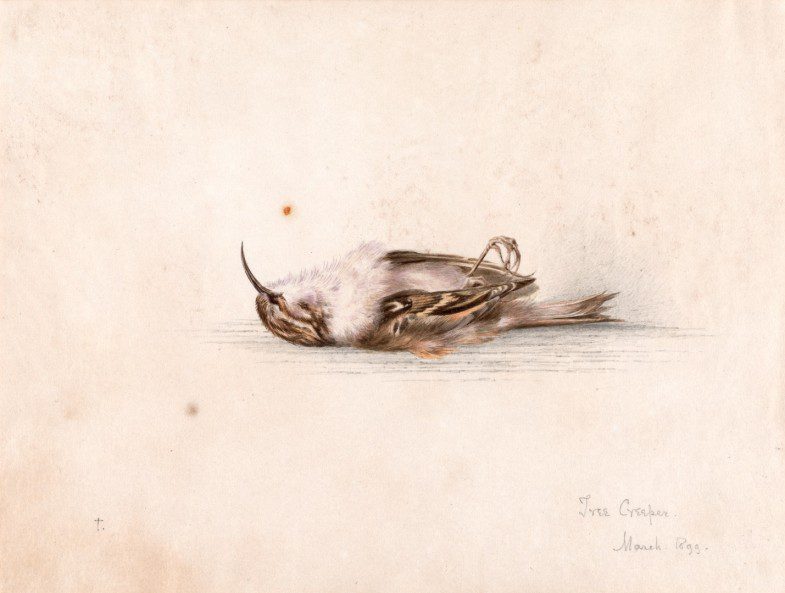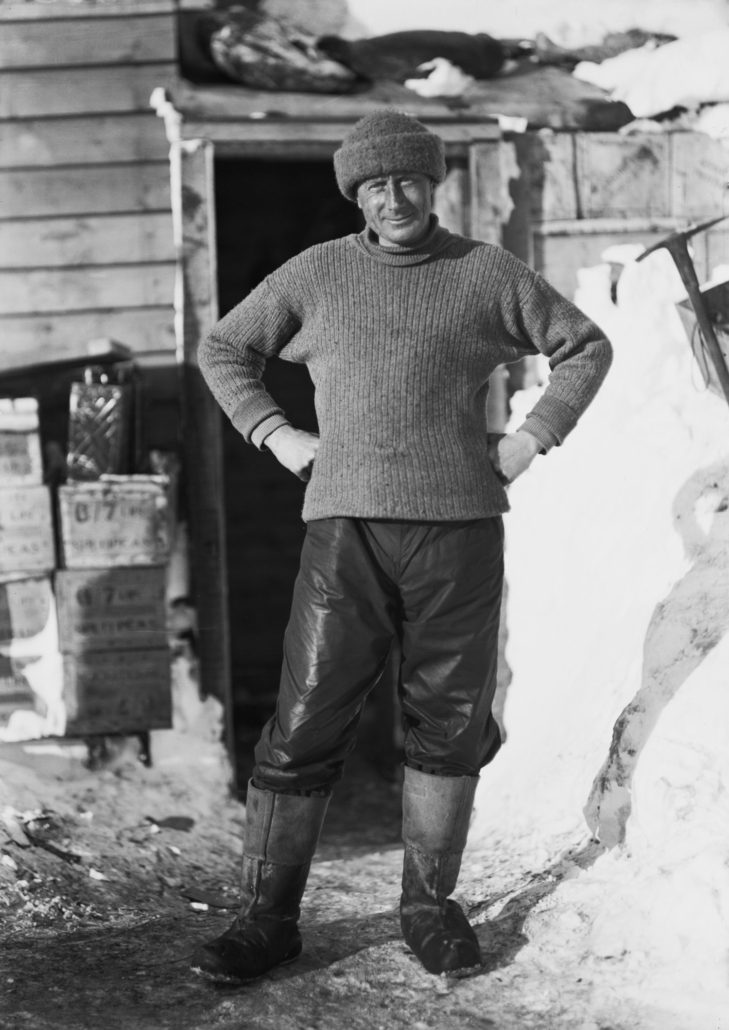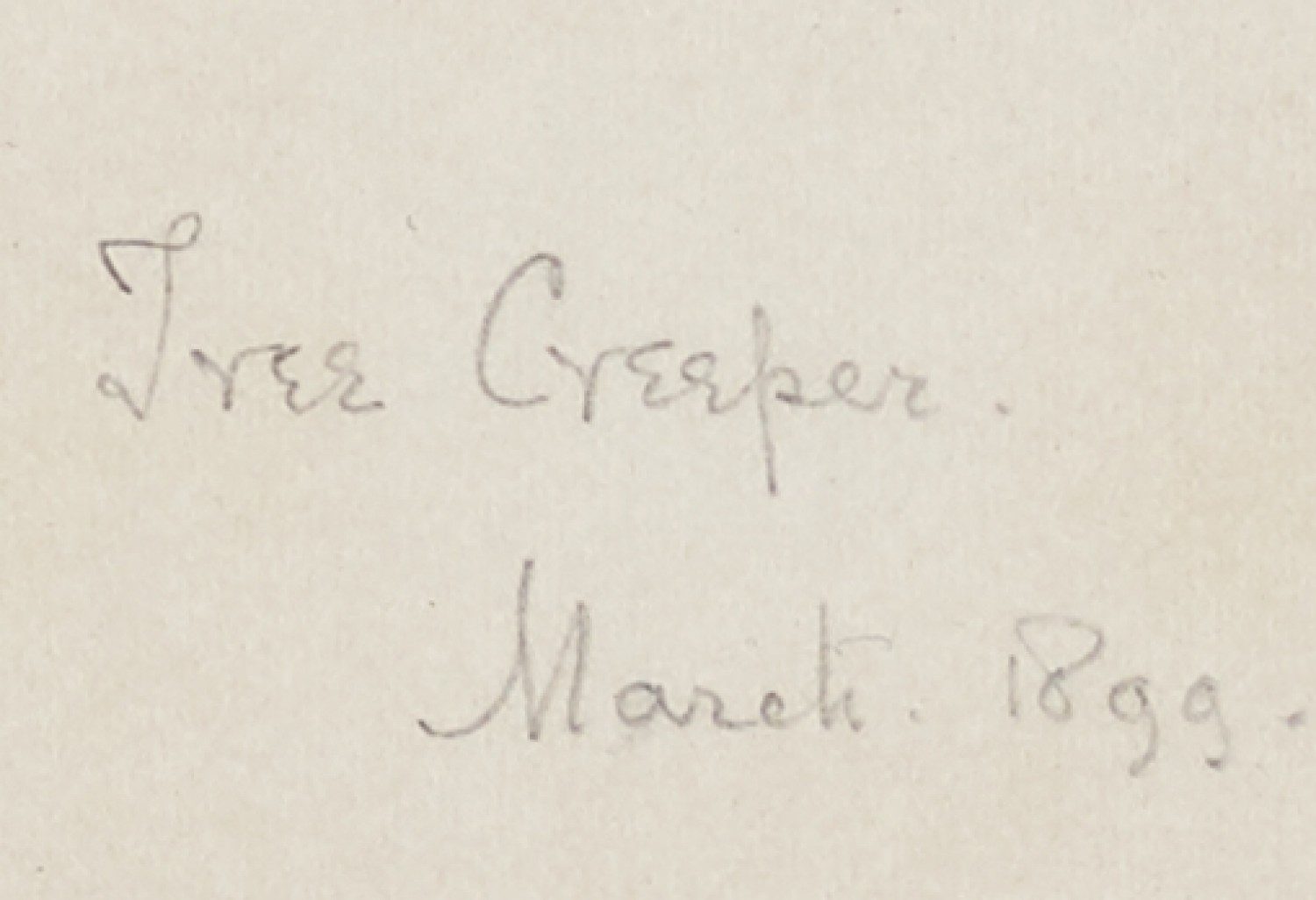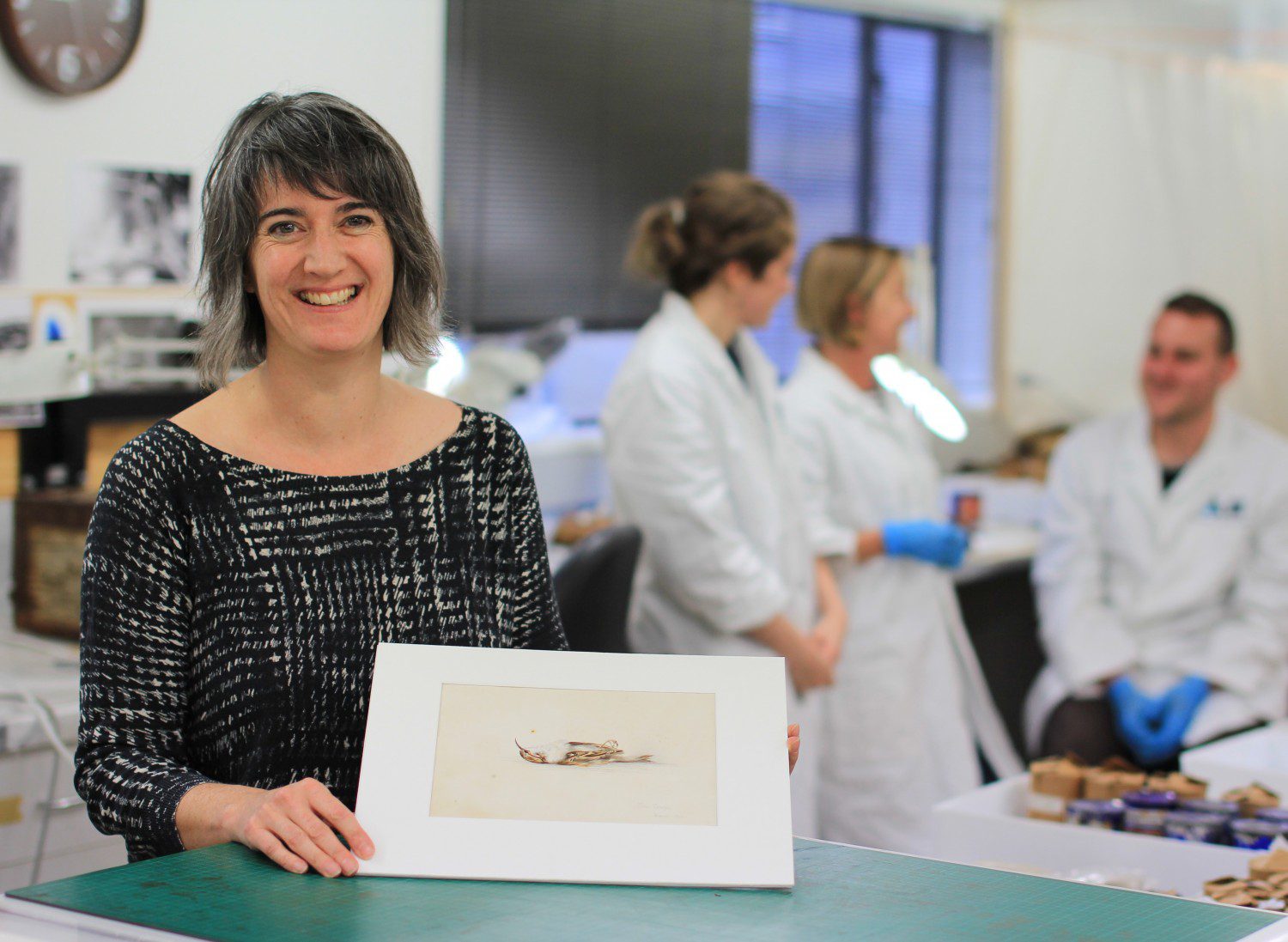Dr Edward Wilson Watercolour
New Zealand Antarctic Heritage Trust has discovered an almost perfectly preserved 118 year old watercolour painting among penguin-excrement, dust and mould covered papers found in an historic hut at Cape Adare, Antarctica.
 Canterbury Museum
Canterbury Museum The water colour was painted by Dr Edward Wilson who died with Captain Robert Falcon Scott and three others on their return from the South Pole in 1912.
 Canterbury Museum
Canterbury Museum Dr Edward Wilson
“I opened it and there was this gorgeous painting… I got such a fright that I jumped and shut the portfolio again. I then took the painting out and couldn’t stop looking at it – the colours, the vibrancy, it is such a beautiful piece of work. I couldn’t believe it was there.” The painting is labelled ‘1899 Tree Creeper’ and has the initial ‘T’ on it. It depicts a Tree Creeper bird specimen. The discovery was made in September 2016, but has been kept confidential until now to enable the team to focus on restoring all of the 1,500 artefacts from Cape Adare.
 Antarctic Heritage Trust
Antarctic Heritage Trust  Antarctic Heritage Trust
Antarctic Heritage Trust The Trust’s Programme Manager – Artefact Conservation, Lizzie Meek says it wasn’t immediately clear who the artist was given that two expeditions had based themselves at Cape Adare. “The Cape Adare huts were built by Norwegian Carsten Borchgrevink’s expedition in 1899 and later used by Captain Scott’s party in 1911. We knew the artist was likely to be among the men on those expeditions,” says Lizzie.
Borchgrevink’s hut at Cape Adare is built amongst a colony of over 400,000 breeding pairs of Adelie penguins.
As the Trust was working to identify the artist, Josefin attended a lecture at Canterbury University on Dr Wilson. “The presenter showed some of Dr Wilson’s artwork… as soon as I saw his distinctive handwriting, I knew he had painted the Tree Creeper. This made sense as there was also a 1911 newspaper article from the Lyttelton Times in the papers and Scott’s party went to Antarctica via New Zealand.”
 Antarctic Heritage Trust
Antarctic Heritage Trust Lizzie Meek says Dr Wilson was a remarkable man. “He was not only a talented painter, but a scientist and a medical doctor who was an integral member of both of Scott’s expeditions to the Ice.” Josefin is not surprised the painting survived in such excellent condition. “Water colour paintings are particularly susceptible to light so the fact this work has spent more than a hundred years tightly packed between other sheets of paper in completely dark and cold conditions is actually an ideal way to store it.” Lizzie Meek says how the painting came to be in the hut is still something of a mystery. “It’s likely that Wilson painted it while he was recovering from tuberculosis in Europe. Clearly, he could have taken the painting to Antarctica on either of Scott’s expeditions but we think it’s more likely the artwork travelled with him in 1911, and somehow made its way from Cape Evans to Cape Adare.”
 Antarctic Heritage Trust
Antarctic Heritage Trust The permit the Trust was granted to collect the artefacts stipulates that all of the items must be returned to the site following conservation, in accordance with the site’s status as an Antarctic Specially Protected Area (ASPA). This will happen once the huts themselves have been restored. The Trust’s General Manager Operations and Communications, Francesca Eathorne says finding the painting is a poignant reminder of the inspiring legacy the early polar explorers left behind. “More than a century later we are still sharing stories about those expeditions. We’ve been able to create a high quality facsimile of the painting so we are now looking forward to sharing it with the rest of the world. We are in no doubt this will attract global interest – particularly from our friends in the UK.” Visit Cheltenham’s art gallery and museum The Wilson: www.cheltenhammuseum.org.uk
You can conserve these incredible artefacts
Each year our expert team of conservators travel to Antarctica to maintain and conserve these huts and the 20,000 artefacts left inside. This ongoing work ensures that the legacy of Antarctic exploration continues for generations to come. But we cannot do this work without help from people like you.
By making a gift to the Trust you can help conserve the legacy of Antarctic exploration. If you’re passionate about this work, consider becoming an Antarctic Explorer Member or leaving a gift in your Will.



 Antarctic Heritage Trust
Antarctic Heritage Trust